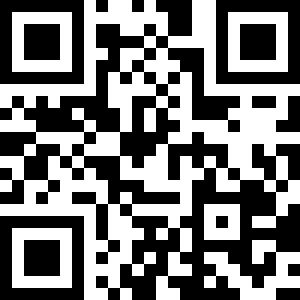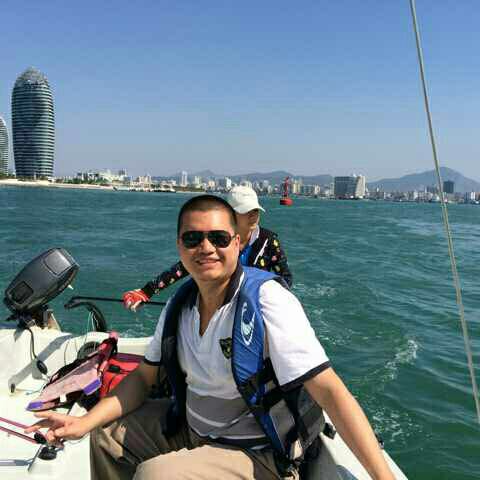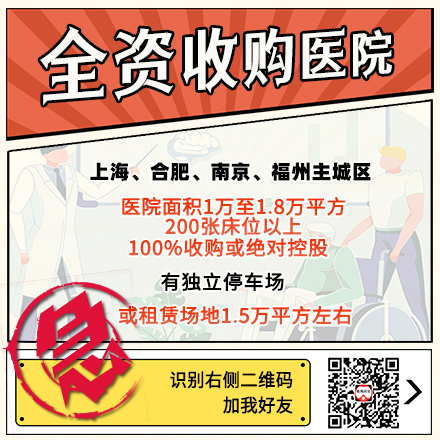 医院买卖小程序
医院买卖小程序

美国CDC网站公布的关于新冠病毒在美国防控措施,以下是中英文全文。
《CDC给医院防控疫情的工作清单,针对可疑和确诊患者》
《CDC给医院员工的防控建议工作清单》
《CDC在本阶段暂用的感染患者筛查标准》
《CDC在本阶段暂用的对医疗机构防控疫情的建议》
《CDC在本阶段暂用的对临床医生的工作指南》

CDC给医院防控疫情的工作清单,针对可疑和确诊患者
该清单重点介绍了医院工作人员(尤其是医院急诊管理人员,感染防控从业人员和临床从业人员)要检查的关键区域,为nCoV患者到达医院做准备。
美国所有医院都需要为疑似或确诊的新型冠状病毒2019(2019-nCoV)患者做好准备。所有医院应配备并准备:
防止2019-nCoV传播
识别和隔离患有2019-nCoV的患者,并告知机构工作人员和公共卫生当局
为数量有限的已知或疑似2019-nCoV的患者提供护理是常规操作的一部分
在传播升级的情况下可能会照顾更多的患者
概述内部和外部沟通的计划
监控和管理可能暴露于2019年nCoV的医护人员
管理对患者、机构和医护人员的影响
以下清单重点介绍了医院在准备2019-nCoV时需要审查的一些关键领域。该清单无意提出强制性要求或建立国家标准。
确保机构感染的预防和控制政策与疾病控制与预防中心的2019-nCoV指南一致。
审查程序以快速识别和隔离可疑的2019-nCoV患者。
确保有能力根据公共卫生指南在适当的情况下使用远程(即基于电话,基于互联网的)方法来进行分诊检查活动,以最大程度地减少对医疗保健系统的需求。
确保有负压的空气传播感染隔离室可用并且运行正常,并且对气流和排气处理进行了适当的监控。
评估个人防护设备(PPE)和其他感染预防和控制用品(例如手部清洁用品)的可用性,这些用品既可用于保护医护人员(HCP)又可用于从源头控制受感染患者(例如,患者口罩)。
如果对个人防护装备或其他用品的需求超过供应量,则应制定应急计划。
审查实施医疗激增程序和护理危机标准的计划。
审查实验室提交的标本以进行2019-nCoV测试的程序。
评估环境清洁程序的有效性 ; 为环境服务人员提供教育/进修培训。
审查用于监控和管理可能接触2019-nCoV的HCP的政策和程序,包括确保HCP可以通过电话等方式随时获得医疗咨询。
确保已对适当的HCP进行了医学体检,适合性测试和培训,便于使用呼吸器。
为HCP提供以下教育和进修培训:有关2019-nCoV诊断,如何获得标本测试,适当的PPE使用,包括患者安置在内的分诊程序,HCP病假政策,应如何、向谁报告2019-nCoV病例以及在机构中对疑似2019-nCoV患者进行无保护的暴露后(即不佩戴建议的PPE)应采取的程序。
审查机构中访客访问和活动的计划
确保已在机构内指定了负责与公共卫生官员进行沟通并将信息传播给机构内其他HCP的特定人员。
确认要报告2019-nCoV病例的当地或州卫生部门联系人并确认报告要求。
在疾病预防控制中心网页上监测2019中国武汉新型冠状病毒的情况(网址:https://www.cdc.gov/coronavirus/2019-ncov/index.html)。
Hospital Preparedness Checklist for Suspected or Confirmed 2019-nCoV Patients
All U.S. hospitals need to be prepared for patients with suspected or confirmed novel coronavirus 2019 (2019-nCoV). All hospitals should be equipped and ready to:
prevent spread of 2019-nCoV
identify and isolate patients with 2019-nCoV and inform key facility staff and public health authorities
care for a limited number of patients with known or suspected 2019-nCoV as part of routine operations
potentially care for a larger number of patients in the context of escalating transmission
outline plans for internal and external communication
monitor and manage healthcare personnel with potential for exposure to 2019 nCoV
manage the impact on patients, the facility, and healthcare personnel
The following checklist highlights some key areas for hospitals to review in preparation for 2019-nCoV. The checklist format is not intended to set forth mandatory requirements or establish national standards.
Ensure facility infection prevention and control policies are consistent with the Centers for Disease Control and Prevention’s 2019-nCoV guidance.
Review procedures for rapidly identifying and isolating suspected 2019-nCoV patients,
Assure ability to implement triage activities based on public health guidance including at the facility and using remote (i.e., phone, internet-based) methods where appropriate to minimize demand on the health care system.
Ensure that negative-pressure airborne infection isolation rooms are available and functioning correctly and are appropriately monitored for airflow and exhaust handling.
Assess availability of personal protective equipment (PPE) and other infection prevention and control supplies (e.g., hand hygiene supplies) that would be used for both healthcare personnel (HCP) protection and source control for infected patients (e.g., facemask on the patient).
Have contingency plans if the demand for PPE or other supplies exceeds supply.
Review plans for implementation of surge capacity procedures and crisis standards of care.
Review procedures for laboratory submission of specimens for 2019-nCoV testing.
Assess effectiveness of environmental cleaning procedures; provide education/refresher training for environmental services personnel.
Review policies and procedures for monitoring and managing HCP with potential for exposure to 2019-nCoV, including ensuring that HCP have ready access, including via telephone, to medical consultation.
Ensure that appropriate HCP have been medically cleared, fit-tested, and trained for respirator use.
Provide education and refresher training to HCP regarding 2019-nCoV diagnosis, how to obtain specimen testing, appropriate PPE use, triage procedures including patient placement, HCP sick leave policies, and how and to whom 2019-nCoV cases should be reported, procedures to take following unprotected exposures (i.e., not wearing recommended PPE) to suspected 2019-nCoV patients at the facility.
Review plans for visitor access and movement within the facility
Ensure that specific persons have been designated within the facility who are responsible for communication with public health officials and dissemination of information to other HCP at the facility.
Confirm the local or state health department contact for reporting 2019-nCoV cases and confirm reporting requirements.
Monitor the situation on CDC’s web page 2019 Novel Coronavirus, Wuhan, China
CDC给医院员工的防控建议工作清单
美国的一线医疗人员应准备评估患者的新型冠状病毒(2019-nCoV)。以下清单重点介绍了医护人员为可能感染2019-nCoV的患者运送和到达做准备的关键步骤。
了解有关2019-nCoV疾病的体征和症状,诊断测试以及病例定义的最新信息。
审查您的2019-nCoV感染预防和控制政策以及CDC 感染控制建议 :
急性呼吸道症状患进行评估和分类
患者安置
实施标准,接触和空中预防措施,包括使用眼罩
访客管理与排除
对患者源头的控制措施(例如,对可疑患者戴口罩)
执行气雾生成程序的要求
对符合调查对象(PUI) 定义的患者保持警惕
知道如何报告潜在的2019-nCoV病例或如何联系机构感染控制负责人和公共卫生官员
发现怀疑或确诊的nCoV患者无保护的暴露后(即未佩戴推荐的PPE),知道由谁,何时以及如何寻求职业健康评估
生病留在家里,并通知职业健康服务
知道如何联系您所在州或地方公共卫生机构并从中获得信息
Healthcare Professional Preparedness Checklist For Transport and Arrival of Patients Potentially Infected with 2019-nCoV
Front-line healthcare personnel in the United States should be prepared to evaluate patients for novel coronavirus (2019-nCoV). The following checklist highlights key steps for healthcare personnel in preparation for transport and arrival of patients potentially infected with 2019-nCoV.
Stay up to date on the latest information about signs and symptoms, diagnostic testing, and case definitions for 2019-nCoV disease.
Review your infection prevention and control policies and CDC infection control recommendations for 2019-nCoV for:
Assessment and triage of patients with acute respiratory symptoms
Patient placement
Implementation of Standard, Contact, and Airborne Precautions, including the use of eye protection
Visitor management and exclusion
Source control measures for patients (e.g., put facemask on suspect patients)
Requirements for performing aerosol generating procedures
Be alert for patients who meet the persons under investigation (PUI) definition
Know how to report a potential 2019-nCoV case or exposure to facility infection control leads and public health officials
Know who, when, and how to seek evaluation by occupational health following an unprotected exposure (i.e., not wearing recommended PPE) to a suspected or confirmed nCoV patient
Remain at home, and notify occupational health services, if you are ill
Know how to contact and receive information from your state or local public health agency
符合以下条件的美国患者应被评估为2019-nCoV的PUI。

该标准旨在用作评估指南。如果患者的临床表现或暴露史模棱两可(例如,不确定的旅行或暴露),则应逐案对患者进行评估和讨论。
报告,测试和标本收集的建议
2020年2月3日更新
如果2019-nCoV发生PUI,医疗提供者应立即通知其医疗机构的感染控制人员及其地方或州卫生部门。确定了PUI的州卫生部门应立即致电770-488-7100与CDC紧急行动中心(EOC)联系,并填写下面提供的2019-nCoV PUI病例调查表。
下载可填写的PDF表格pdf
下载Microsoft Word表格Word
疾病预防控制中心的EOC将协助地方/州卫生部门适当地收集,存储和运送标本到疾病预防控制中心,包括在下班后或在周末/节假日。目前,只能在CDC进行2019-nCoV的诊断测试。
测试其他呼吸道病原体不应延迟地将标本运送至CDC。如果PUI对另一种呼吸道病原体检测呈阳性,则经过临床评估并咨询公共卫生当局后,可能不再将其视为PUI。随着有关2019-nCoV合并感染的更多信息可用,这一情况可能会演变。
出于生物安全原因,不建议在细胞培养中进行病毒分离或从PUI的2019-nCoV标本培养物中回收的病毒制剂的初始表征。
为了增加检测2019-nCoV感染的可能性,疾病预防控制中心建议从不同部位收集和测试多个临床标本,包括下呼吸道和上呼吸道两种标本。可以收集和存储其他类型的标本(例如,粪便,尿液)。一旦确定PUI,无论症状发作的时间如何,都应尽快收集标本。提供了有关收集,处理和测试临床样本的其他指南。
脚注
1.发烧可能是主观或确认的
2.密切接触的定义为—
a)长时间处于距离2019-nCoV病例约6英尺(2米)的范围内; 与2019-nCoV病例一起照顾,居住,探访或共享医疗保健等候区或房间时,可能会发生密切接触
- 或者 -
b)直接接触2019-nCoV病例的传染性分泌物(例如咳嗽)
如果在不穿着建议的个人防护设备或PPE(例如,褂子,手套,经NIOSH认证的一次性N95呼吸器,眼睛保护装置)的情况下发生此类接触,则符合考虑PUI的标准。
请参阅CDC 针对2019年新型冠状病毒进行调查的人员的最新《临时医疗感染预防和控制建议》。
告知密切接触定义的数据有限。评估密切接触时的考虑因素包括暴露时间(例如,更长的暴露时间可能会增加暴露风险)和2019-nCoV患者的临床症状(例如,咳嗽可能会增加重病患者的暴露风险)。应特别考虑那些在医疗机构中接触过的人。
3.其他国家的旅行者或患者护理人员可能无法获得2019-nCoV 的实验室确认文件。
4.类别还包括病因不明的严重急性下呼吸道疾病(例如,肺炎,ARDS)患者群的任何成员,其中认为2019-nCoV需要住院。不论旅行历史如何,都应与州和地方卫生部门协商,对此类人员进行评估。
5.对于在14天之内到中国旅行,由当地卫生部门定期监测或由边境检查进行评估的人员,卫生官员可酌情考虑对所有发热和下呼吸道疾病患者进行nCoV检测症状(住院和未住院者)。
Persons Under Investigation (PUI) for 2019-nCoV
Patients in the United States who meet the following criteria should be evaluated as a PUI for 2019-nCoV.

The criteria are intended to serve as guidance for evaluation. Patients should be evaluated and discussed with public health departments on a case-by-case basis if their clinical presentation or exposure history is equivocal (e.g., uncertain travel or exposure).
Recommendations for Reporting, Testing, and Specimen Collection
Updated February 3, 2020
Healthcare providers should immediately notify both infection control personnel at their healthcare facility and their local or state health department in the event of a PUI for 2019-nCoV. State health departments that have identified a PUI should immediately contact CDC’s Emergency Operations Center (EOC) at 770-488-7100 and complete a 2019-nCoV PUI case investigation form available below.
Download fillable PDF form pdf icon[PDF – 211 KB]
Download Microsoft Word form word icon[DOC – 90 KB]
CDC’s EOC will assist local/state health departments to collect, store, and ship specimens appropriately to CDC, including during afterhours or on weekends/holidays. At this time, diagnostic testing for 2019-nCoV can be conducted only at CDC.
Testing for other respiratory pathogens should not delay specimen shipping to CDC. If a PUI tests positive for another respiratory pathogen, after clinical evaluation and consultation with public health authorities, they may no longer be considered a PUI. This may evolve as more information becomes available on possible 2019-nCoV co-infections.
For biosafety reasons, it is not recommended to perform virus isolation in cell culture or initial characterization of viral agents recovered in cultures of specimens from a PUI for 2019-nCoV.
To increase the likelihood of detecting 2019-nCoV infection, CDC recommends collecting and testing multiple clinical specimens from different sites, including two specimen types—lower respiratory and upper respiratory. Additional specimen types (e.g., stool, urine) may be collected and stored. Specimens should be collected as soon as possible once a PUI is identified regardless of time of symptom onset. Additional guidance for collection, handling, and testing of clinical specimens is available.
Footnotes
1.Fever may be subjective or confirmed
2.Close contact is defined as—
a) being within approximately 6 feet (2 meters) of a 2019-nCoV case for a prolonged period of time; close contact can occur while caring for, living with, visiting, or sharing a health care waiting area or room with a 2019-nCoV case
– or –
b) having direct contact with infectious secretions of a 2019-nCoV case (e.g., being coughed on)
If such contact occurs while not wearing recommended personal protective equipment or PPE (e.g., gowns, gloves, NIOSH-certified disposable N95 respirator, eye protection), criteria for PUI consideration are met”
See CDC’s updated Interim Healthcare Infection Prevention and Control Recommendations for Persons Under Investigation for 2019 Novel Coronavirus.
Data to inform the definition of close contact are limited. Considerations when assessing close contact include the duration of exposure (e.g., longer exposure time likely increases exposure risk) and the clinical symptoms of the person with 2019-nCoV (e.g., coughing likely increases exposure risk as does exposure to a severely ill patient). Special consideration should be given to those exposed in health care settings.
3.Documentation of laboratory-confirmation of 2019-nCoV may not be possible for travelers or persons caring for patients in other countries.
4.Category also includes any member of a cluster of patients with severe acute lower respiratory illness (e.g., pneumonia, ARDS) of unknown etiology in which 2019-nCoV is being considered that requires hospitalization. Such persons should be evaluated in consultation with state and local health departments regardless of travel history.
5.For persons with travel to China within 14 days that are being regularly monitored by local health departments or referred for evaluation from border screening, testing for nCoV can be considered at the discretion of the health officials for all persons with illnesses with fever and lower respiratory symptoms (those hospitalized and those not hospitalized).
重磅:国家八部门发文“重症医学”发展利好“闪亮”
作者:秦永方 时间:2024-05-08 11:10:07 文章来源:原创
刍议:卫健委为什么不称为“部”“局”,称作委员会?
作者:码万祺 时间:2024-05-08 10:56:20 文章来源:原创
商保朝门诊使劲,门诊对商保来说是有神力的好药
作者:码万祺 时间:2024-05-08 10:52:54 文章来源:原创
替代率达43% 药王修美乐市场份额断崖式下降
作者:村夫日记 时间:2024-05-08 10:49:27 文章来源:原创
医保新形势下,药店护城河“从零开始”(上)
作者:码万祺 时间:2024-05-07 17:24:41 文章来源:原创
医保新形势下,药店护城河“从零开始”(下)
作者:码万祺 时间:2024-05-07 17:24:41 文章来源:原创





